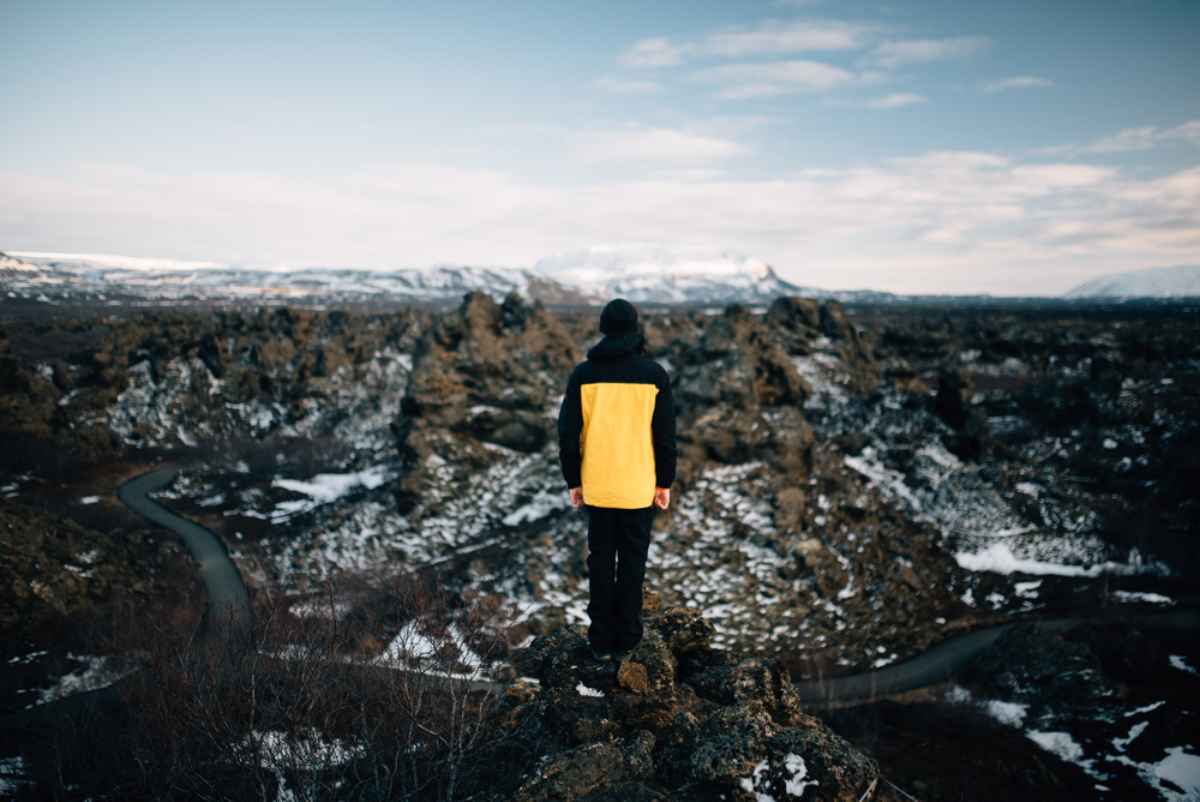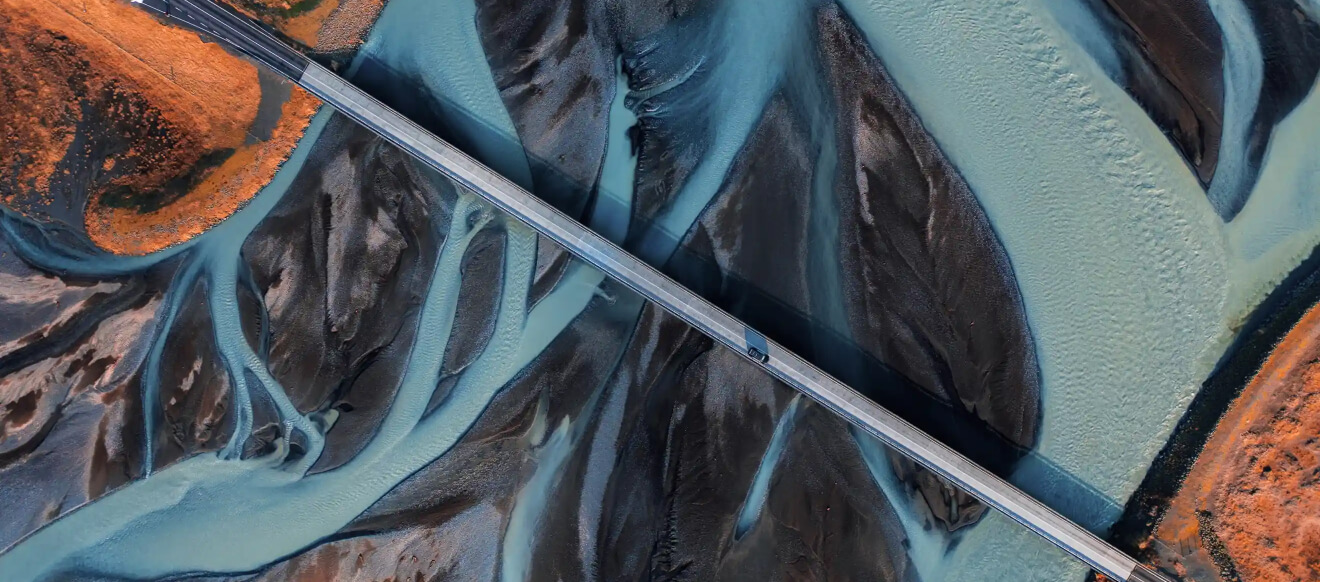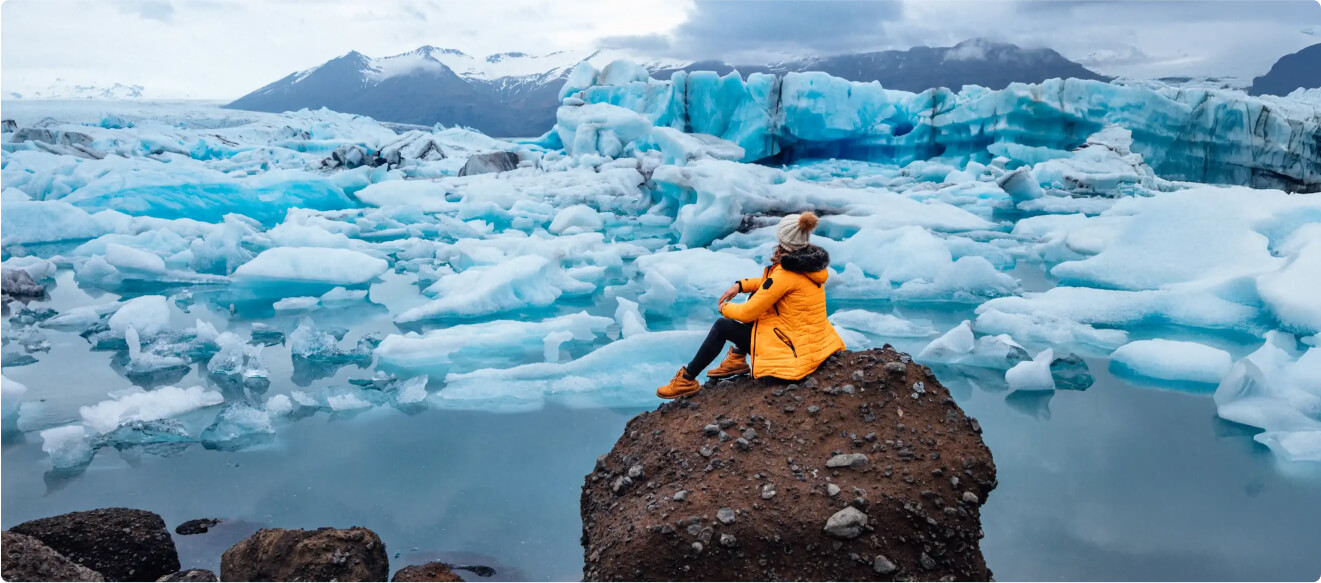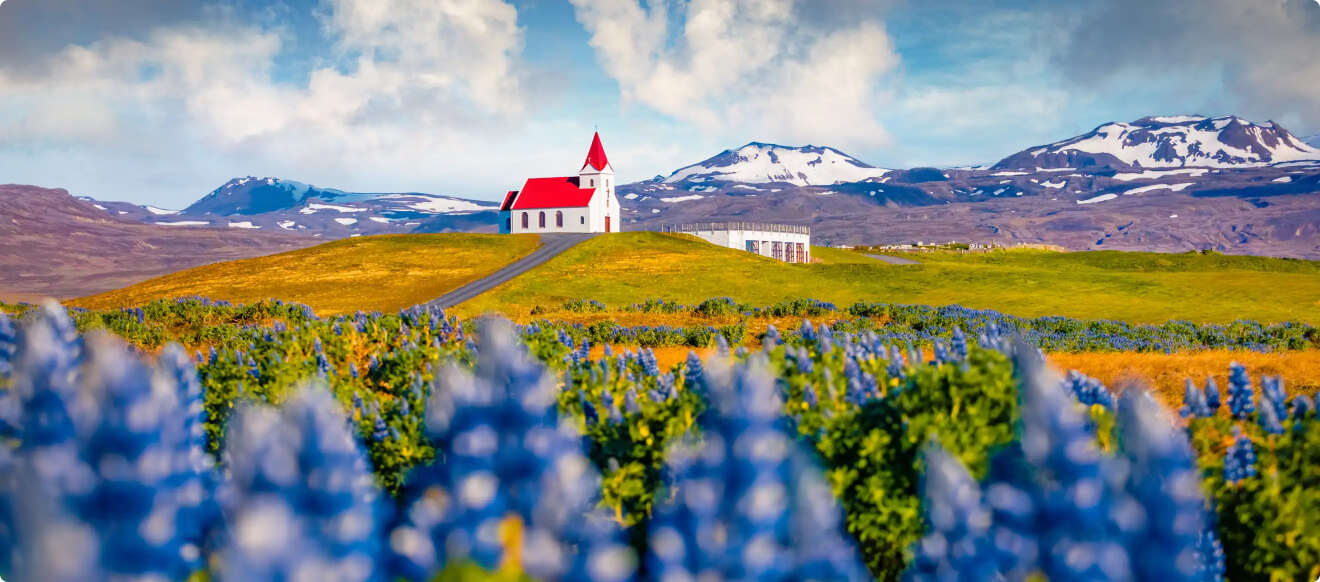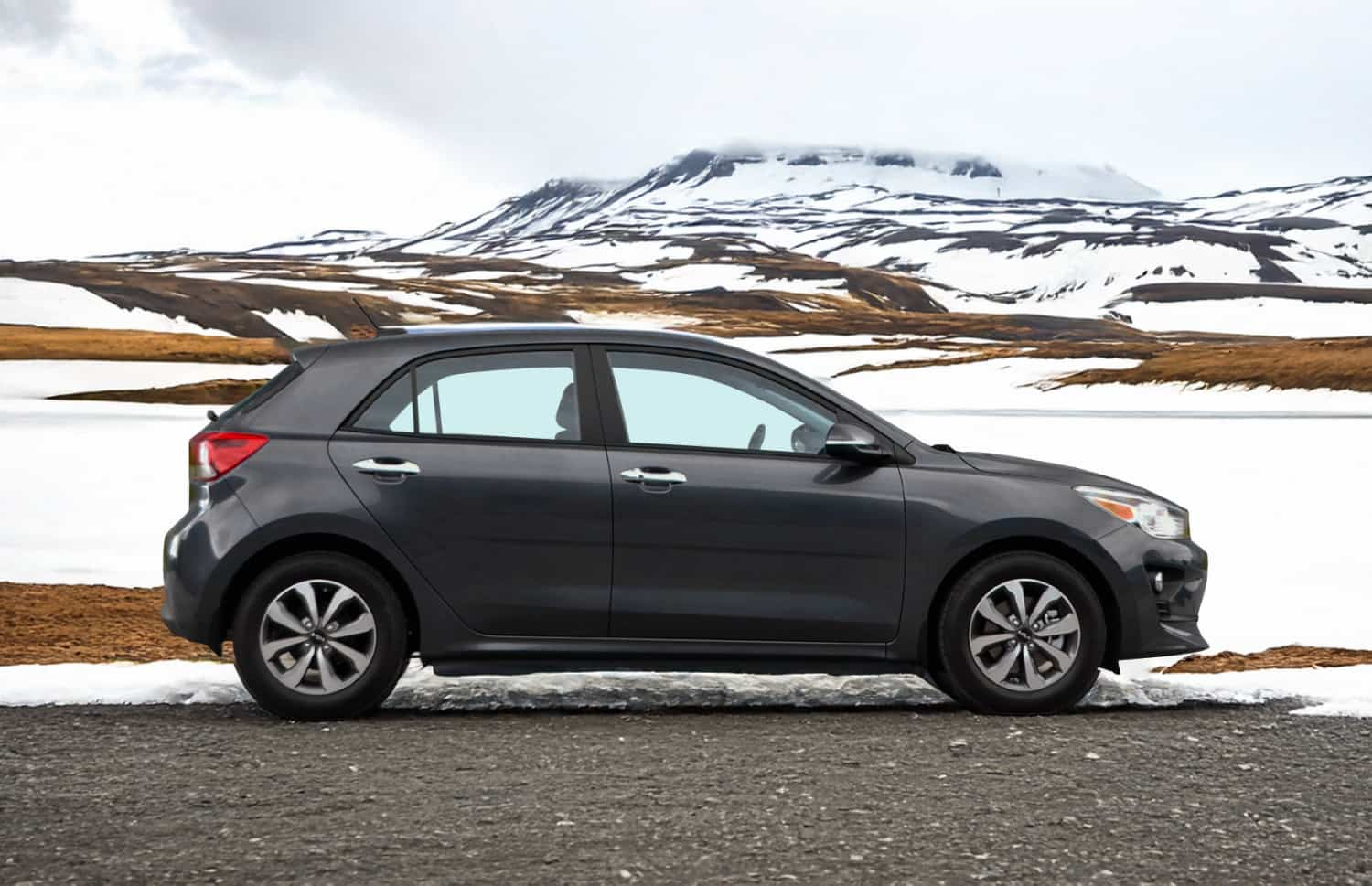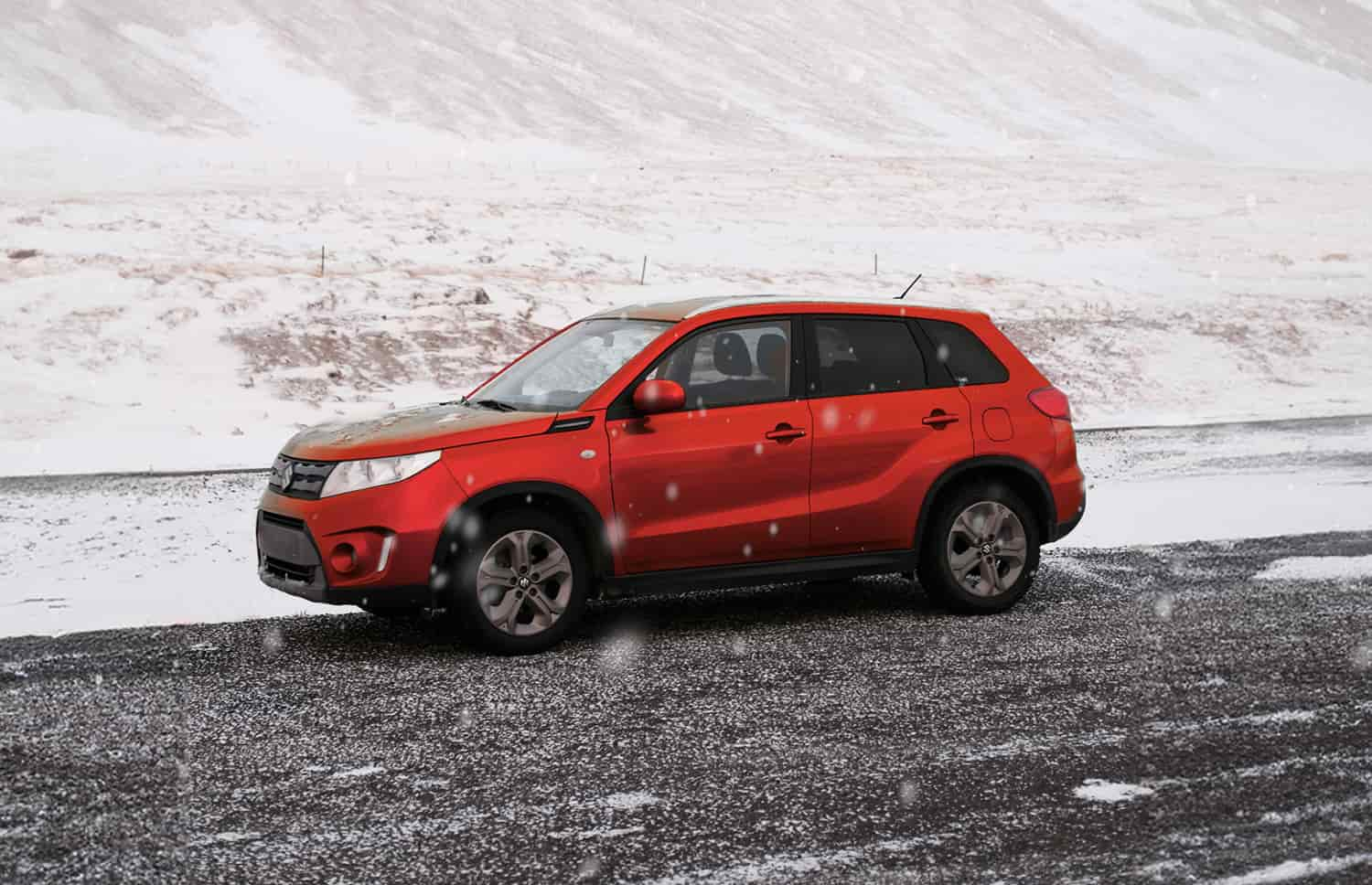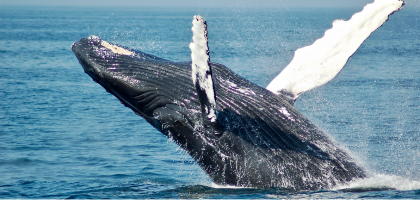Dimmuborgir, also known as the Black Fortress, is one of the most famous lava fields in the world, and one of the most popular attractions in Iceland.
Due to its geological youth, much of Iceland is still composed of rough lava rocks. Volcanic activity continues to this day on the island: every few hundred years, fresh lava fields are formed, inevitably changing what the landscape of Iceland looks like. When the lava flows, its interaction with the features of the land affects the shape it takes when it cools. This leads to some wonderful formations, such as columns, stacks, and twisting caverns.
Dimmuborgir: What Is It and How To Pronounce?
Dimmuborgir is pronounced “Dim-moo-bore-gear”, and translates to ‘Dark Castles’.
It is a unique lava field covering a large area in north Iceland, near Mývatn lake. It gets its name from its resemblance to a collapsed fortress, due to the stacks and archways. About 2,300 years ago, a large eruption formed a lava lake, which flowed through a lava tube.
At the site now known as Dimmuborgir, the lava ran into a water lake, causing the water to boil rapidly. The clash with the water also cooled the lava much quicker than normal. Steam broke through the lava in certain places, leaving behind pillars of various sizes. The lava spread far and much of the top crust collapsed, so only the pillars were left behind. This created what we now know as Dimmuborgir. It has grown to become one of the country’s most visited tourist attractions.
How to Get to Dimmuborgir
This lava field lies northeast of Reykjavík, 471 km (293 miles) from the capital. Most of the journey involves driving along Iceland's Ring Road (Route 1), towards and past Akureyri (if you’re traveling clockwise).
After Akureyri, continue driving along Route 1 until you come to a junction with Route 848. Follow that until you see a right turn for Dimmuborgir. Overall, a journey of around six hours from the capital, so it’s best to have somewhere close by to stay. Of course, Dimmuborgir could be one-stop of many on a mega Ring Road trip.
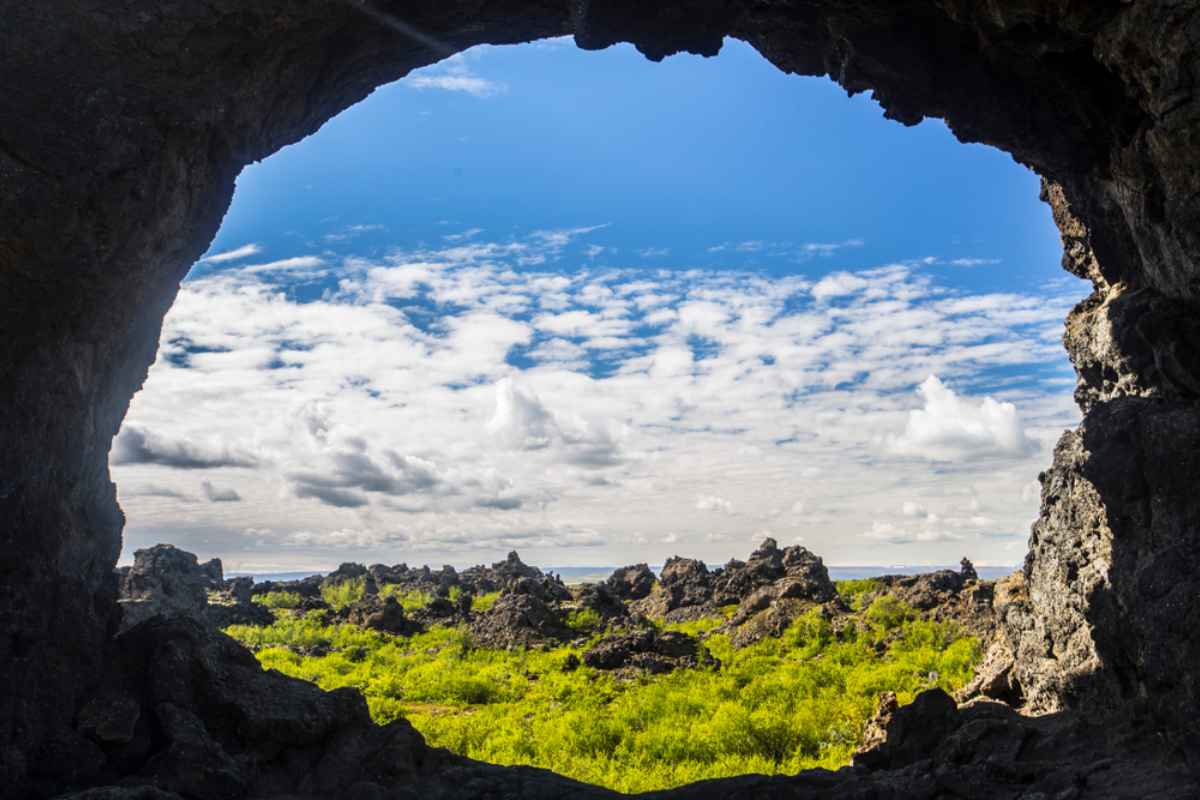
Where is the Arch You Can Stand Under at Dimmuborgir?
When you are exploring Dimmuborgir, you have the option of several colour-coded walking paths of various difficulties to choose from. Please stick to the paths and don’t cross over ropes; the lava rock is very fragile in places. Climbing on the rock can be enough to break it; if everyone did that there would be nothing to see.
One of the most famous spots in the lava field is known as Kirkjan- “The Church”. This is a triangular archway that is so neat it looks man-made, but it is in fact naturally formed. There is a path that leads directly to the arch, called Kirkjuhringurinn- The Church Route. This circuit is about 2.4km (1.5 miles long). Pay attention to what path you’re on; it’s easy to get lost as the trails all look very similar. Another route will lead you to the Yule Lad Cave, which has the troll children’s lava beds lining the walls.
Parking is free at Dimmuborgir, and there are toilets on site that cost ISK 200 (USD 1.61) There’s also a café/souvenir shop called Kaffi Borgir overlooking the lava field.
Where Can You Stay Near Dimmuborgir?
There is in fact a lovely place to stay very close to Dimmuborgir; the family-owned Dimmuborgir Guesthouse. It’s only a few minutes’ drive from the car park that is the entrance to the lava field. You also get a great view of Lake Mývatn, as the Guesthouse is built right on its bank. They have simple Economy rooms as well as cottages of various sizes to cater to larger families. The largest cottage also includes a private porch and hot tub.
In the small village of Reykjahlíð there are also places to stay, such as Hotel Reykjahlíð and Eldá Guesthouse. The 500-person village is only a ten-minute drive from Dimmuborgir, so it’s still very accessible with your rental car in Iceland.
Make the most of your time here; Mývatn is often referred to as the Northern Lights Capital of Iceland. You can check the Aurora forecast on Iceland’s official weather page, or on the ‘My Aurora Forecast’ app. And only 8km away you have the Mývatn Nature Baths, one of the best geothermal spas in the country. It’s the north’s answer to the south’s Blue Lagoon; the Baths also have bright blue, naturally heated geothermal water. Book yourself in for some time in the Nature Baths here.
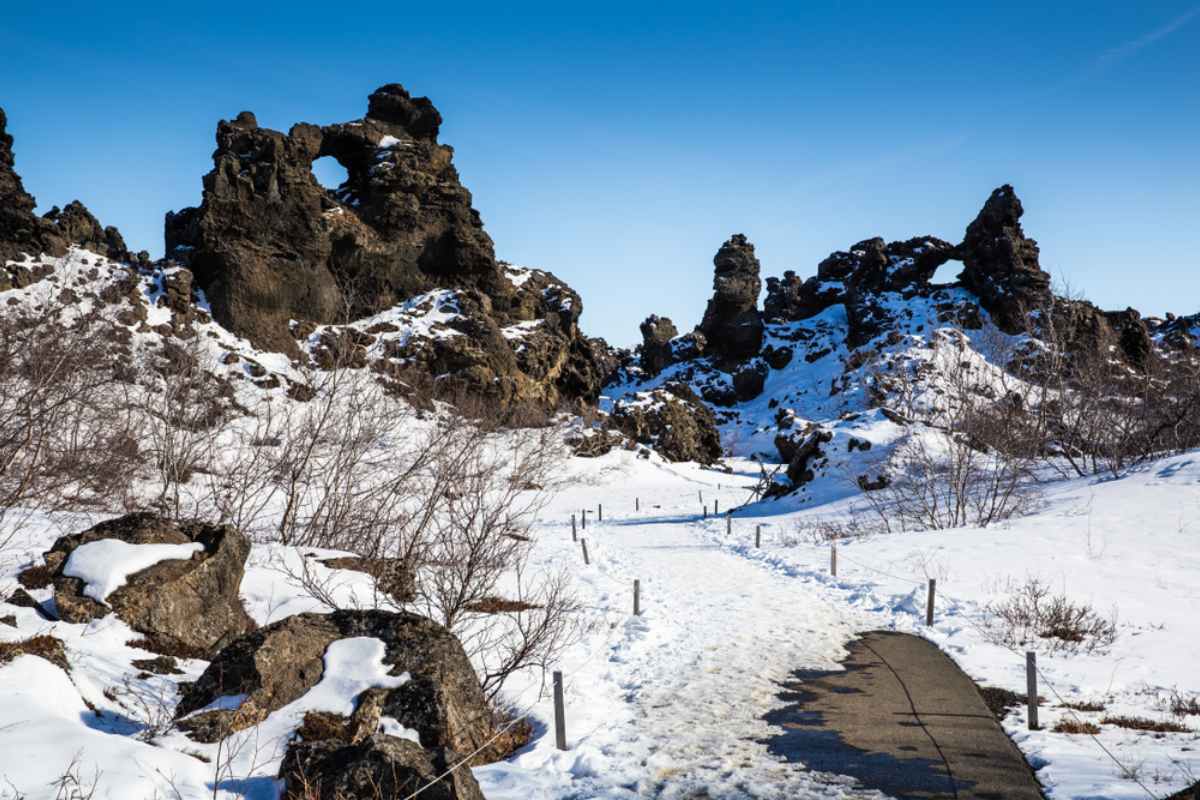
Dimmuborgir is often included as a stop on the Diamond Circle, a route that covers some of the north’s hotspots. Other stops include Goðafoss waterfall, Húsavík, Ásbyrgi Canyon, Dettifoss waterfall and Lake Mývatn. With your rental car, you can cover this route in a day if you’re starting from somewhere nearby. Don’t forget that Akureyri, Iceland’s second-largest urban area (outside the capital region) also lies fairly close. There are some fantastic hikes in the area if it’s summer, and great snowboarding to be had in winter.
Dimmuborgir in Icelandic Folklore
The Dimmuborgir Trolls
In Icelandic folklore, wicked trolls roam the land, coming out only at night. They make their homes in lava caves and eat children, and some trolls were given names and individual personalities. Grýla and her husband Leppalúði, the most famous trolls, could not touch well-behaved children, and only took the naughty ones. This, of course, was a way to make children behave; parents could achieve compliance by threatening them with Grýla’s wrath. It also stopped children from wandering off, if they believed there were monsters waiting for them in the wilderness. These trolls conceived thirteen children who made Dimmuborgir their home. These are known as Jólasveinarir- the Yule Lads.
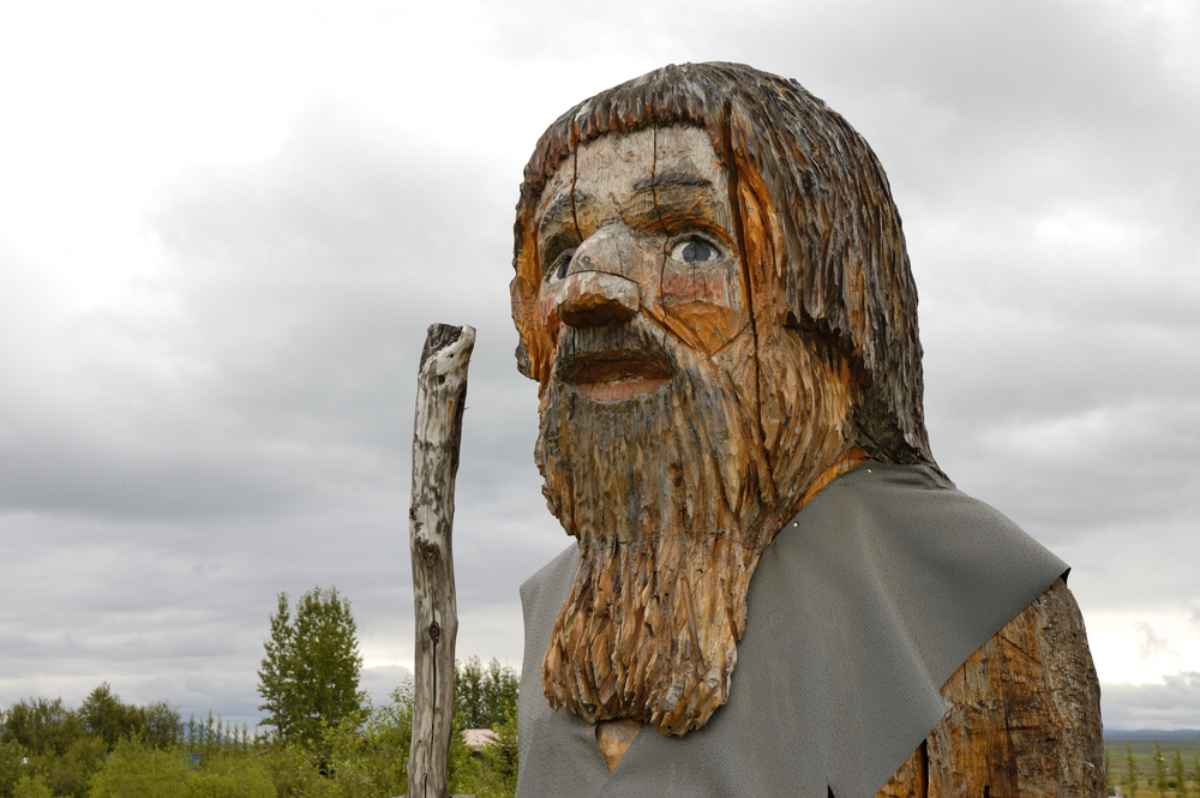
Dimmuborgir Yule Lads
Dimmuborgir’s lava formations include large chambers big enough to house people. This is where the thirteen Yule Lads are said to live. Thirteen days before Christmas the troll children come down from the mountain, one by one, and venture into human towns. Each night leading up to Christmas, the Yule Lads cause a different kind of mischief. They bear names such as Spoon Licker, Door Slammer, Candle Stealer and Window Peeper.
Aside from causing trouble, these trolls have also come to be the Icelandic versions of Santa Claus. Each night from December 12th until December 24th, Icelandic children leave their best shoe on the window sill before bed. The next morning, the children will wake up to find a gift in their shoe, left by a Yule Lad. That is if the child has been well-behaved. Naughty children may wake up to find a raw potato in their shoe. To this day, the potato gift is used by parents to give their child a push in the right direction.
Whereas the Yule Lads used to be dressed in traditional Icelandic clothing, they are now depicted wearing typical Santa costumes.
Alongside their thirteen children, Grýla and Leppalúði also had a pet: a cat known as the Yule Cat.
The Yule Cat
The yule cat, the trolls’ giant pet, performed a very specific role in Iceland. It would prowl the country and eat those who had not received any new clothes prior to Christmas Eve. This was used as an incentive to encourage children to finish their knitting and sowing chores in time for the Icelandic Christmas. In the lead up to Christmas, a lit-up statue of the Yule Cat is placed in Lækjartorg, in downtown Reykjavík. It has become a popular activity to have a photo taken with the statue. The Trolls and their oversized pets, however, are not the only stories that exist around Dimmuborgir.
Dimmuborgir: A Path to Hell
When Iceland officially converted to Christianity in the year 1000CE, its folklore mingled with Christian stories and teachings. A new story emerged about Dimmuborgir; it is said to be the place where Earth connects with Hell. It’s also the place where Satan fell when he was cast out of Heaven, forming the catacombs of Hell. And so, Dimmuborgir is one of Iceland’s most significant sites for both pagan and Christian ideas. Be careful not to get lost in there; you may end up wandering either into Grýla’s lair or Satan’s. Neither would be pleasant.
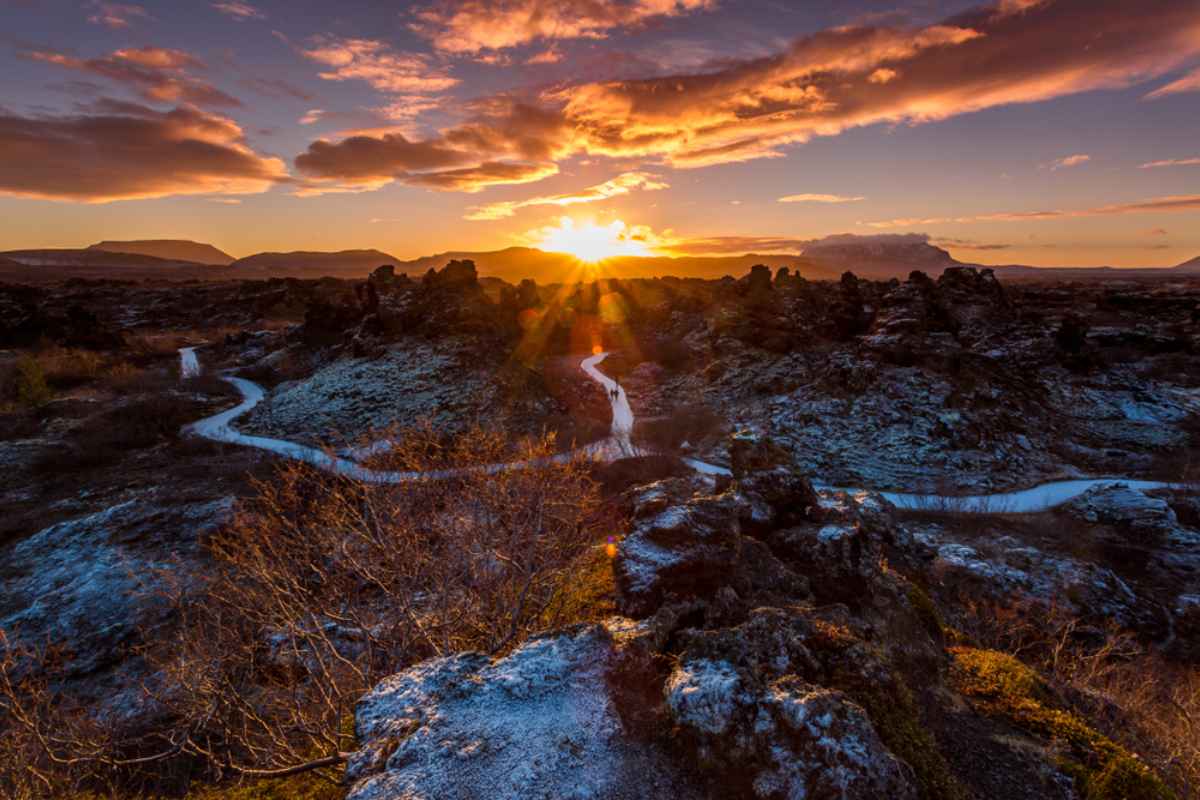
Final Remarks
Visiting lava fields is one thing you have to do during your time in Iceland. They’re not hard to find, since they cover a large part of the island’s surface, but Dimmuborgir stands out. It’s a striking example of the wonderful shapes nature can create, shapes that in turn inspire us in our creations. For example, take a look at Hallgrímskirkja, the largest church in Iceland. Its ‘wings’ were inspired by the naturally formed basalt columns in places like Reynisfjara beach. Or the Harpa Concert Hall, which was inspired by the Icelandic landscape. We will continue to be influenced by the nature around us, so it’s important that we preserve it. Do your best to minimize your impact on the environment during your time in Iceland. Take nothing but photos, leave nothing but footprints.




